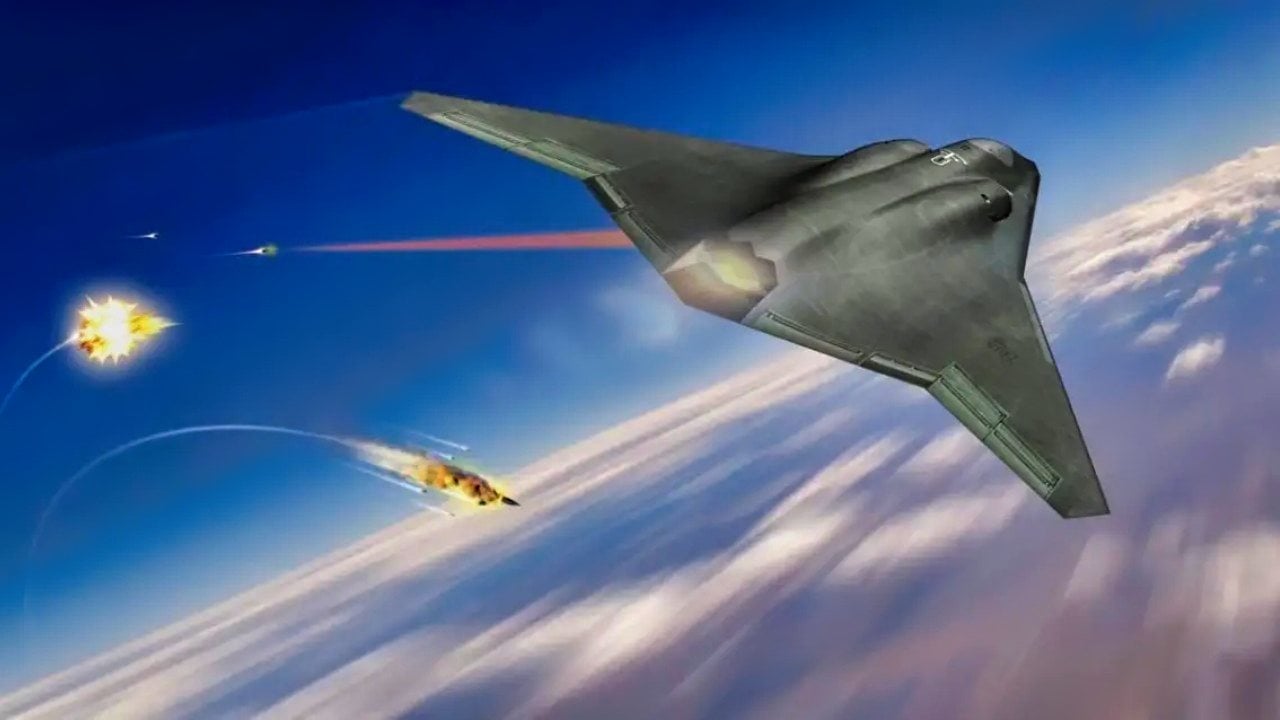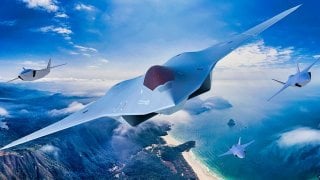The Air Force's Horrible NGAD Fighter Nightmare Won't End
The U.S. Air Force's Next Generation Air Dominance (NGAD) program faces significant challenges as costs rise, leading to reconsideration of its manned component.
Summary and Key Points: The U.S. Air Force's Next Generation Air Dominance (NGAD) program faces significant challenges as costs rise, leading to reconsideration of its manned component.
-With the estimated $300 million per plane, the program may shift toward an unmanned platform, potentially integrating with existing aircraft like the F-22 and F-35.
-Questions arise about the need for NGAD, especially given the continued relevance of the F-22 Raptor.
Bottomline: The discussion also highlights shifting priorities towards space dominance as traditional air superiority becomes harder to achieve in modern warfare.
More NGAD Blues: It’s Not Happening as Planned
U.S. Air Force Secretary Frank Kendall recently suggested the manned portion of the grossly expensive sixth-generation Next Generation Air Dominance (NGAD) program might not actually be manned at all.
While Kendall did not explicitly say that a completely unmanned system was where the NGAD program was headed, he did make clear that the Air Force was now looking at all possibilities for making the sixth-generation warplane fly.
NGAD: It’s Too Expensive
At $300 million per plane, it is unrealistic to think the NGAD program will move forward as the Air Force envisions.
Frankly, the government cannot afford the new system as it is currently proposed. But an unmanned system might do the trick.
Such a system would incorporate the most advanced, next-generation elements of an air dominance warplane in an unmanned platform. That platform could be linked to manned F-35s, F-22s, or even F-16s. It would likely provide the kind of distributed, networked capabilities that the Air Force needs in this dynamic threat environment.
Of course, the greater question is why the NGAD system is even needed.
Should the Pentagon Restart the F-22?
The F-22 Raptor remains the most powerful and advanced warplane in the world, followed closely by the F-35 Lightning II. These fifth-generation warplanes are still in their prime and should be serving the U.S. military at least until the middle of the century. The Air Force’s drive to blow money it doesn’t have on a marginally better sixth-generation warplane is an injudicious use of limited resources.
There was a push a few years back to restart the F-22’s production line, which former President Barack Obama unceremoniously terminated in 2009. An Air Force study estimated that just re-establishing the production line would cost the Air Force $10 billion, Bulgarian Military reported. From there, the study determined that building an additional 194 units would cost the taxpayer $50 billion, or $200 million per new aircraft.
If that math is correct, restarting the F-22 would be about $100 million less per plane than the proposed manned sixth-generation warbird. And an F-22 augmented by next-generation loyal wingman drones would pack as good of a wallop as any proposed sixth-generation plane.
Are Air Dominance and Air Superiority Dead?
Some airpower strategists are questioning the very concept of air dominance, or even air superiority itself.
Citing the experience of the Russian Air Force as well as the Ukrainian military in the ongoing Russo-Ukraine War, Richard Aboulafia of AeroDynamic Advisory told Breaking Defense that the world must come to grips with the idea that “true air dominance and air superiority might no longer feasible.”

The aerospace analyst continued by explaining that, “It speaks to a world where there’s a lot more lethality, there’s a lot more diffusion of threats, and there’s less of a chance of truly obliterating the other side’s air defenses, in which case your use of resources looks very different.”
Spend the Money on Space Dominance
For years, I have argued that the notion of aerial dominance is not gone, but that it has merely migrated to the strategic high ground of space. The creation of a U.S. Space Force, I had hoped, would usher in an era where the U.S. not only created more durable, better defended satellite constellations, but where those systems projected power down to the terrestrial strategic domains below (land, sea, and air).
America’s foes have created robust capabilities to deny any U.S. Air Force plane easy access to their airspace. The proposed sixth-generation warplane, even if it is as great as the Pentagon is making it out to be, will not be as effective in the age of advanced anti-aircraft systems as it would have been before.
The Air Force is beginning to recognize Congress’s doubts about the NGAD program’s goals. The strategic reality of our current moment shows that spending so much money on the NGAD program is a waste.
The way forward involves utilizing existing airframes and marrying them to next-generation drones; rededicating America’s airborne offensive capabilities to be projected from space rather than the air; and creating cheaper systems that are more abundant and can be easily replaced after being destroyed.
Kendall’s acknowledgment that essentially everything was on the table when plotting out how to get the NGAD off the ground is a tacit admission that the Air Force is going to have to adapt or die.
Author Experience and Expertise: Brandon J. Weichert
Brandon J. Weichert, a National Interest national security analyst, is a former Congressional staffer and geopolitical analyst who is a contributor at The Washington Times, the Asia Times, and The-Pipeline. He is the author of Winning Space: How America Remains a Superpower, Biohacked: China’s Race to Control Life, and The Shadow War: Iran’s Quest for Supremacy. His next book, A Disaster of Our Own Making: How the West Lost Ukraine, is due October 22 from Encounter Books. Weichert can be followed via Twitter @WeTheBrandon.
All images are Creative Commons or Shutterstock.
From the Vault
Russia Freaked Out: Why the U.S. Navy 'Unretired' the Iowa-Class Battleships
Battleship vs. Battlecruiser: Iowa-Class vs. Russia's Kirov-Class (Who Wins?)


